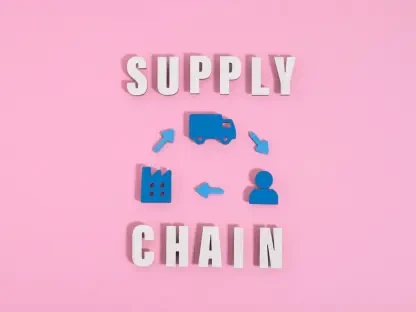As the retail industry navigates a rapidly evolving digital landscape, few challenges loom larger than the reliability of product data. Today, we’re thrilled to sit down with Zainab Hussain, an e-commerce strategist with deep expertise in customer engagement and operations management. With years of experience helping retailers optimize their systems and improve customer experiences, Zainab offers a unique perspective on how technology, particularly AI, is reshaping the industry’s approach to data challenges and beyond.
Can you walk us through the most pressing data challenges facing the retail industry right now?
Absolutely. The biggest issue in retail today is unreliable product data. This isn’t just about wrong numbers—it’s data that’s incomplete, misplaced, or entirely missing. Think about online shoppers being told an item is in stock when it’s not, or customers unable to find a product in-store because the app points them to the wrong aisle. These problems disrupt operations, frustrate customers, and erode trust. It often starts with supplier data, which can vary widely in quality, and cascades into everything from inventory management to customer notifications about recalls or restocks.
How does this unreliable data affect the day-to-day operations of retailers?
On a daily basis, it creates a domino effect. If product data is off, inventory systems can’t accurately track stock levels, leading to over-ordering or stockouts. Staff waste time manually correcting errors or fielding customer complaints about unavailable items. It also messes with pricing accuracy and promotional planning—if the data says you have 100 units of an item for a sale but you only have 10, you’ve got a problem. Ultimately, it’s a drain on resources and a hit to the bottom line because customers walk away dissatisfied.
What are some real-world scenarios where faulty data has caused significant headaches for retailers?
I’ve seen cases where retailers couldn’t notify customers about critical product recalls because the purchase data was incomplete or mismatched. Imagine the liability risk there. Another common issue is with stock availability—customers order online for in-store pickup, arrive, and the item isn’t there because the system was wrong. I’ve also encountered situations where apps direct shoppers to a specific shelf for a product, but it’s been moved or is out of stock due to outdated planograms. These aren’t just inconveniences; they damage brand loyalty over time.
How do you see AI, particularly agentic AI, stepping in to tackle these data reliability issues?
AI, especially agentic AI, has incredible potential here because it can work autonomously to identify and even resolve data issues. Unlike traditional systems that just flag errors for humans to fix, agentic AI can analyze patterns, spot inconsistencies, and suggest corrections in real time. It’s like having a tireless team auditing data 24/7. Beyond retail, this could apply to other industries with messy data sets—think healthcare records or financial transactions—where AI could streamline accuracy without constant human intervention.
What specific roles could AI agents play in cleaning up supplier data?
AI agents can take on grunt work like cross-referencing supplier data against known benchmarks to catch errors—say, flagging a product weight that doesn’t match standard packaging. They can also fill in missing fields by pulling from historical data or industry standards, like guessing missing ingredient lists based on similar products. Over time, they learn from corrections and get smarter, reducing the manual workload for retailers. It’s about automating the tedious stuff so teams can focus on strategy, not data entry.
How might AI help build trust between retailers and suppliers when it comes to data accuracy?
AI can act as a neutral mediator by providing transparent feedback loops. For instance, if an AI system flags inconsistent data from a supplier, it can send specific, actionable reports—like ‘these five items have incorrect dimensions’—and even suggest fixes. This clarity reduces finger-pointing and fosters collaboration. When both sides see the AI improving outcomes, like fewer stock discrepancies, trust grows because the data becomes a shared, reliable foundation rather than a point of contention.
Given the wide range of supplier data reliability—anywhere from 50% to 90%—what’s your perspective on the current state of this data?
It’s a mixed bag, and that range reflects the diversity of suppliers and retail sub-sectors. Larger, well-resourced suppliers often hit higher accuracy because they’ve invested in systems and standards, while smaller ones struggle with manual processes or outdated tech, dragging numbers down. Geography and product type play a role too—grocery data might be more reliable for identifiers like barcodes, but apparel might lag in descriptive details. Overall, I’d say we’re hovering around 60-80% reliability, with plenty of room to improve.
Why do you think there’s such a huge variation in these reliability estimates?
It comes down to the complexity of the retail ecosystem. Different retailers prioritize different data points—grocery chains need precise ingredient info for compliance, while fashion retailers might focus on images and sizing. Then you’ve got suppliers ranging from global giants with robust systems to small vendors still using spreadsheets. Add in regional differences, like varying tech adoption or regulatory requirements, and it’s no surprise the estimates are all over the place. It’s not a one-size-fits-all problem.
In your experience, which types of supplier data are most often inaccurate or missing?
From what I’ve seen, descriptive data tends to be the weakest link—things like detailed product descriptions, images, or ingredient lists often get shortchanged or misfiled. Nutritional data might be swapped with ingredients by mistake, or visuals might be low-quality or absent. Core identifiers like barcodes or dimensions are usually better, but even those can slip with smaller suppliers. It’s often the ‘nice-to-have’ data that gets neglected, yet that’s what customers rely on for informed decisions online.
There’s a concept of AI not just flagging errors but fixing data autonomously. How practical do you think this is for retailers?
It’s promising but not fully there yet. AI fixing data on its own works best for predictable errors—like correcting a weight based on past entries—but it’s trickier for nuanced data like allergen info, where mistakes could have serious consequences. The tech can learn over time, and we’re seeing progress, but retailers need to balance automation with oversight. Practically, it could save tons of manual effort, especially for large-scale operations, but it’s not a plug-and-play solution just yet.
What challenges might retailers face if they allow AI to correct supplier data without human supervision?
The biggest risk is error amplification. If AI misinterprets a pattern and applies a wrong fix across thousands of products—like swapping allergen labels—it could create a bigger mess than the original problem. There’s also the trust factor; retailers might worry about liability if AI makes a bad call on critical data. Plus, without human checks, you might miss contextual nuances that AI can’t yet grasp. It’s a powerful tool, but unchecked autonomy could backfire without proper guardrails.
How can suppliers be incentivized to collaborate with AI systems to improve their data quality?
It starts with showing them the mutual benefit. If retailers can demonstrate that better data through AI leads to fewer returns, happier customers, and stronger sales, suppliers will buy in. Offering shared access to AI tools or dashboards that highlight data gaps can also make the process collaborative rather than punitive. Incentives like faster payment cycles for high-quality data or reduced manual audits could sweeten the deal. It’s about aligning goals—both sides want efficiency and trust.
Do you agree that even a modest improvement in data accuracy, say 10% or 20%, can have a significant impact on retail operations?
Absolutely. Even a small jump in accuracy can cut down on major pain points. For instance, reducing out-of-stock errors by 10% means fewer disappointed customers and less lost revenue. It can also rebuild confidence to roll out features like real-time stock updates or recall alerts, which many retailers avoid due to unreliable data. Small gains compound quickly when you’re dealing with millions of items and transactions—every percentage point matters.
What operational shifts could retailers make if data reliability improved by just that 10% or 20%?
With that kind of improvement, retailers could confidently enhance customer-facing tools, like offering precise in-store product locators or accurate online inventory updates. They might also revisit automated recall notifications, knowing the data won’t lead to false positives. Operationally, they could streamline supply chain decisions—order less excess stock or better predict demand. Even modest gains open the door to innovations they’ve held off on due to distrust in the data.
There’s discussion about transitioning from barcodes to QR codes with better data reliability. What’s your take on this potential change?
I think it’s a game-changer in theory. QR codes can hold vastly more information than barcodes—think detailed product histories, temperature logs for perishables, or direct links to rich online content. It could transform how retailers manage inventory and how customers access info, like scanning for recipes or allergen details. But it hinges on data reliability. If the underlying info isn’t accurate, a QR code just amplifies the mess. So, it’s exciting, but the foundation has to be solid first.
How could QR codes reshape interactions between retailers and customers around product information?
QR codes could make product info incredibly interactive. Customers might scan an item in-store to see its full origin story, sustainability stats, or even personalized recommendations. Retailers could use them to push real-time promotions or loyalty perks directly via the scan. It turns a static label into a digital gateway, deepening engagement. For retailers, it’s also a treasure trove of behavioral data—tracking what customers scan most could inform stocking or marketing strategies.
What do you see as the biggest obstacles to a global shift from barcodes to QR codes?
Coordination is the monster hurdle. You’re talking about aligning suppliers, retailers, and supply chain players worldwide on a new standard, which is no small feat given how complex QR codes are compared to barcodes. Then there’s the cost—upgrading scanners, software, and infrastructure isn’t cheap, especially for smaller players. Resistance to change is another issue; some might drag their feet if they don’t see immediate ROI. Plus, without near-perfect data reliability, the investment feels risky. It’s a massive undertaking requiring global consensus.
What is your forecast for the role of AI in solving retail data challenges over the next five years?
I’m optimistic that AI will become the backbone of retail data management within five years. We’ll likely see agentic AI systems not just flagging but proactively fixing a majority of routine data errors, with human oversight shrinking to edge cases. I expect AI to drive supplier data reliability past 90% for most major retailers, enabling bolder operational changes like QR code adoption or real-time inventory syncing. Beyond retail, AI’s problem-solving frameworks will cross-pollinate into other sectors, tackling similar data headaches. The key will be balancing automation with trust—getting stakeholders comfortable with AI’s role while ensuring accuracy. It’s poised to be transformative if we navigate the growing pains.









